When CDIEers Meet Germany
— A report on CDIE6’s study tour to Munich and Stuttgart, Germany
From December 4 to 13, 2019, thirteen students from Class CDIE6 of Xinya College were led by teachers Xu Yingqing, Zhang Lei and Fan Yinliang to Munich and Stuttgart, Germany, for a week-long overseas practical activity. The team visited BMW Group, Mercedes-Benz AG, Porsche and other famous automobile manufacturers, and investigated the development history and trend of German industrial design based on their professional courses. The practical activity was informing and very rewarding to the students.
On December 5, the first morning after we reached Munich, we embarked on an exploratory tour to the Deutsches Museum.It is the world’s largest science and technology museum, with exhibits covering more than 50 science and technology fields and about 28,000 subjects. Founded in 1903, the Deutsches Museum located on a small isletofthe Isar River was like an old man with rich experience and wisdom that stood silently to welcome his admirers from all over the world.
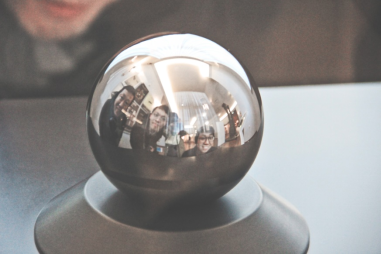
We roamed in twos or threes in the exhibition halls. Some marveled at the amazing visual effect of light & shadow art, some were indulged in an immersive coffee theme area, some found back the excitement of seeing interesting physical phenomena for the first time in high school classes, andsomeenjoyed a free and novel experience brought by an immersive exploration of the moon through VR technology. The varied and dazzling exhibits in the museum opened windows to various fields for us. They collided with the existing creative design thinking of CDIE students, emitting countless unrestrained innovation sparks.
The staircase in the Deutsches Museum was also unique. It was clear, pure, overlapped and well-arranged. It looked like a winding, dazzling ray of light, showing the infinite charm of a spiral curve. It also looked like a complete and rounded conch, quietly recording every tide in history. The beauty of the museum was enhanced by the double image produced by light and shade.
After we got out of the Deutsches Museum, night fell and cold wind began to work. We came to a downtown Christmas market to experiencethedistinctive festive atmosphere. Despite the freezing night wind, warm mulled wine dispelled the chill at once. We held warm and adorable wine glasses in both hands, white vapor spraying out of the mouth. We listened to the cheerful songs and melodies on the square. Against the colorful Christmas lights, our smiles looked brighter.
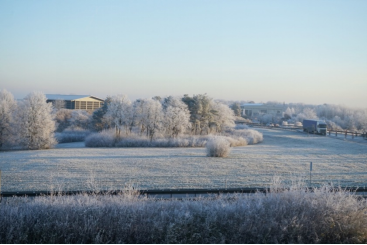
After I woke up on the morning of December 6, I unintentionally opened the curtain of my room only to be amazed by the snowscape outside. The window framed a snow world, serene and peaceful. The snow field contrasted with the blue sky, and the rime was dyed golden by the sunrise. The picture framed by the window was perfect for that moment.
In the morning, we first visited BMW Museum and BMW’s factory. Inside the museum were displayed all BMW models in history. From dazzling racing cars developed with the rise of the automobile industry in the last century, to private cars with gradually simple and graceful shapes and future high-tech transportation means, the wide range of models made us marvel at people’s tireless exploration of automobiles. Nevertheless, what impressed us most is a highly automated car production line in the factory. In a huge workshop, hundreds of mechanical arms were working collaboratively in order. They shuttled and roared. The smell of sparks filled the air. Overlooked, the workshop looked like a huge being, the mechanical arms worked as its cells, and the transporters among the mechanical arms were like blood vessels connecting cells, constantly delivering workpieces of different forms. At the highly automated workshop, we marveled at the current level of industrial development and also the great power of human beings to produce and transform the world through industrial technologies developed in hundreds of years.
On the quiet afternoon, CDIE students strolled on a lawn of the Olympic Park. Although it was not three o’clock yet, the sun already set slightly above the stadium due to the high latitude. The stadium, built in the 1970s, is nearly half a century years old, but its unique glass cover and smooth profile look stylish even today. The previous Olympic stadium is now part of Munich citizens’ life, with walkers, joggers, children playing in groups and ducks having fun in the lake. The golden setting sun brought a little warmth to people standing in cold wind. It looked like the soft heart of filled chocolate. The students stood or sat, moved or stopped, quietly listening to the whisper of the Olympic Park in the sunset.
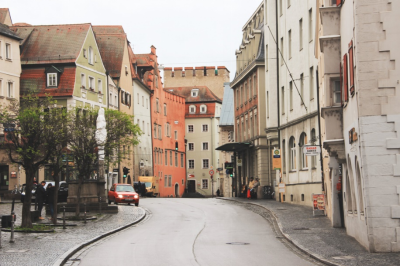
On December 7, our team arrived in Regensburg, a beautiful ancient city on the bank of the Danube. As we went through the city gate and stepped onto the stone bridge, a sense of time travel struck me. The Danube flowed quietly underneath, and everything slowed down. When we looked back at the ancient city, the sky was found gradually clear up. The stone bridge under our feet had spent more than 800 years amidst the vicissitudes of history. Several visitors in green folk costumes posed in an exaggerated way for photos on the bridge as if they had just passed another era.
Regensburg’s historical city centeris well preserved. It deserves the reputation of the largest medieval city in Germany. We strolledalong thewinding rocky road. On both sides were well arranged various ancient buildings as well as original handicrafts. The quaint atmosphere was breathtaking. Dom St. Peter (Regensburg Cathedral) stood upright in the center of the city. It was a pity that we did not hear the beautiful singing of the Regensburger Domspatzen (Regensburg Cathedral Sparrows), but the grandeur and solemnity of the building astounded us.
In the afternoon, we returned to Munich by car, and had a panoramic view of the cityscape on the top of the bell tower of Neues Rathaus — the new city hall of Munich in ancient Gothic style. The busy and happy Christmas market at the foot of the bell tower also impressed everyone. “Happiness” was displayed in the form of physical objects on the occasion — golden red, warm and bubbling, or glittering handicrafts were smiling and waiting there to tell you a Christmas story. People gathered at the city gate and sang “Hallelujah” that spread throughout the block. Such beautiful nights would last for a whole month — they were not in a hurry to end the magic.
This is the charm of Munich. It is both a modern industrial center, with avant-garde automobile museums and football fields, and a historic relic. Standing on the top of the bell tower of the City Hall at night, I found that no building within the scope of the old city is higher than the distant St. Mary’s Church. I remembered the commentator at BMW’s factory before complained about being unable to expand the production space and having to arrange more assembly lines in the vertical direction of the building. Germany is so keen on efficiency and scale, but it is still willing to keep an ancient gate between the new city and the old one, so that people in the new city stride towards the future while time in the old city passes slowly like the Danube water.
On the morning of December 8, we drove from Munich to Stuttgart. The natural scenery along the way was amazing. After arriving in Stuttgart, we first visited the Porsche Museum.
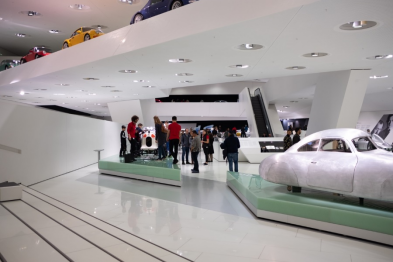
Porsche, with a luxurious and exquisite name, features a feminine kind of luxurious beauty in its cars, design and exhibition hall.After we entered the museum, the first thing that heaved into sight wasthepure white decoration — white shiny floor, beams and columns. It was just like the texture of jewelry of the reflective paintwork on a car body.
The models were displayed in chronological order. Among them, the 911 Model is the most classic, marking a legend of Porsche. During the visit, what attracted me was not only the overall design of the car body, but also those amazing details that showed the designers’ pursuit for extreme aesthetics.
On that evening, we visited a Christmas market in downtown Stuttgart.
A Christmas market is definitely a good destination on the Christmas Eve. Stuttgart’s Christmas market was notas crowded as that of Munich. The spare space was arranged with many amusement facilities that were attractive to children. There wasamerry-go-round, miniature trains, shiny fans, and a skating rink. The market integrated light and shadow, and motion and stillness. The amusement facilities in the market were accompanied by the singing and laughter of visitors. Of course, there was also a variety of delicious food and handicrafts.
Handicrafts are one of the major features of Germany. There were wooden dolls, crystal blown glasses, and Christmas tree ornaments, too many to count.
Stuttgart, as a modern “horse ranch” of Germany, is a cluster of the world’s top car manufacturers. Therefore, the visit to Daimler AG became a highlight of our tour in Stuttgart.
On the morning of December 9, we came to ARENA2036, the R&D center of the University of Stuttgart, to attend lectures by leaders of Startup Autobahn, an innovation platform operator, and paid quick visits to some startups in ARENA2036. "ARENA" is an acronym for "Active Research Environment for the Next Generation of Automobiles". It literally means "arena". The name appropriately summarizes its basic model — large companies including Daimler as well as the government and universities provide equipment, capital and venues to form a unified innovation platform for startups. Excellent innovation results can be adopted and absorbed by the leading automobile enterprises gathered there for the design and manufacturing of the next generation of automobiles. “Autobahn” means “expressway” in German. The company plays the role of an intermediary between large enterprises and small startups and a venture capital provider. The business model is novel. The company has established partnership with a number of companies, including Daimler and the IoT startups ThingOS and NaiSE, with a market value of seven billion U.S. dollars.
On that afternoon, we visited well-known Sindelfingen Plant.It is known as “the Hollywood of automotive manufacturing”. Founded in 1915, it is now the main production line for many premium sedan series of Mercedes-Benz. The plant has achieved a 98% automation rate. In the workshop, we could meet automatic robots anytime and anywhere that transported parts between production lines. The scene reminded CDIE6 students of the automatic robot assignment under the “Fundamental Digital Electronic Technique” course two years ago! When the guide showed us the autobody parts made through automatic stamping, spot welding, laser welding and other processes, we recalled a series of manufacturing methods instructed in the “Fundamental of Mechanical Manufacture” course last semester. The remaining 2% of manpower added life to the gray workshop full of mechanical noise.In the rhythmic pop music, tall and strong men were manually making parts for customized premium cars, and short but flexible women were undertaking parts assembly that could not be done by robots. The words and deeds of each worker, including the guide, showed the rigorous style of the German nation and the pride of being a member of Mercedes-Benz, a time-honored brand in the automobile industry and a world industrial leader.
On the evening of that day, CDIE students and teachers got together to exchange what they saw and thought in Germany these days. Students talked about their new discoveries in the Deutsches Museum and tried to apply their ingenious ideas to design. The three teachers had in-depth exchanges with the students based on their rich experience.
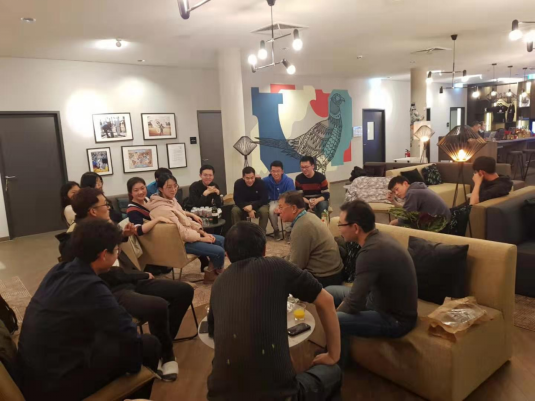
On the morning of December 10, we visited the Mercedes-Benz Museum. The museum has five floors, with each containing a main exhibition hall, an auxiliary exhibition hall and a corridor. The main exhibition hall displayed the development of Mercedes-Benz models from foundation to the present in chronological order. The auxiliary exhibition hall introduced the achievements of Mercedes-Benz in police cars, firefighting trucks, ORVs, tourist buses and other dedicated vehicles under different subjects. The corridor introduced the historical background of Mercedes-Benz model development through images and texts. The students benefited a lot from the amazing exhibition design and models on display, design details and historical materials, up-to-date design concepts and brand development ideas.
On the afternoon, we came to Lab1886, an innovation research center of Mercedes-Benz to have an in-depth communication with the laboratory staff. Dr. Benjamin first introduced to us the process and key points of products innovation and incubation in the lab. After that, the students expressed their views on innovation based on their own study and research. Finally, Ms. Catherina, head of the laboratory, answered the questions about innovation raised by the students.As the students wrote their expectations for future product innovation on notes, the solid workshop came to an end in laughter.
The day coincided with the birthday of the student Yu Gang and the celebration in the foreign country was particularly unforgettable. A bright-colored and appetizing cake was suddenly taken out. We sang the Happy Birthday song and sent our best wishes to Yu Gang. The winter night of Stuttgart became warmer with the touching memories.
On the last day of our trip to Germany, we visited Metzingen, south Stuttgart. Metzingen is a time-honored town with lovely scenes. It is home to the most famous outlet in Germany: Outletcity Metzingen. We saw traditional German buildings, pure streams, as well as brand shops and bustling shoppers there. We roamed on a windy and drizzling day, purchasing favorite goods as observing and understanding the elaborate design that could be seen everywhere in the town. The architectural design and display design of each exclusive shop demonstrated the taste and style of each brand, and many amazing details were hidden in the traditional German buildings. We could not help marveling at the originality and excellence of the design, and also the power of details.
This trip to Germany allowed us to have a close look at the development history and brand characteristics of BMW, Mercedes-Benz, Porsche and other famous automobile manufactures, touch the unique core of German industrial design, enjoy the enchanting sceneryin the country, and feel the happy Christmas atmosphere there. What an unforgettable and rewarding study tour!
Finally, We thereby extend my heartfelt thanks to teachers Xu Yingqing, Zhang Lei, and Fan Yinliang for their guidance and support! We would also like to thank our guide Jiao! This study tour will definitely become a highlight in the memory of CDIE6 students about university!